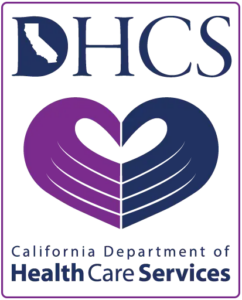If you or a loved one is considering quitting alcohol, it’s normal to ask, “How long does alcohol withdrawal last?” Understanding the alcohol withdrawal timeline is essential for anyone embarking on the journey toward sobriety. While everyone’s experience is different, detox follows a reasonably predictable pattern with symptoms ranging from mild anxiety to severe complications such as seizures or delirium tremens.
In this guide, we’ll walk you through what to expect during alcohol withdrawal, when symptoms typically begin, how long detox can last, and why professional treatment is often the safest and most effective path to recovery.

When Does Alcohol Withdrawal Start?
Alcohol withdrawal typically sets in within 6 to 12 hours after your last drink, though this timeframe can vary based on individual factors such as the extent of alcohol use, overall health, and whether you’ve experienced withdrawal before. Withdrawal begins as the alcohol concentration in your bloodstream falls below the level your body has become accustomed to.
During the early stage of withdrawal—often called the initial detox phase—you may start to notice symptoms such as:
- Headache
- Anxiety
- Sweating
- Nausea
- Irritability
Although these early symptoms may appear mild, they can intensify rapidly without proper medical attention.
How Long Does Alcohol Withdrawal Last?

Alcohol withdrawal isn’t the same for everyone—it depends on factors like how much you’ve been drinking, for how long, your general health, and whether you’ve gone through withdrawal before. Most acute symptoms tend to last between 5 to 7 days, but some effects—especially emotional and psychological—can persist longer.
The Alcohol Withdrawal Timeline
This is usually when the first signs of withdrawal show up. As the alcohol in your bloodstream starts to drop below the level your body has adapted to, you may notice things like tremors (shaky hands), anxiety, nausea, and maybe even trouble sleeping. These symptoms are your body’s way of reacting to the absence of alcohol it has come to rely on.
Symptoms may become more uncomfortable during this window. You might feel disoriented or have difficulty thinking clearly. Insomnia can worsen, and your heart rate and blood pressure may increase. Some people even start experiencing mild hallucinations at this stage.
This is often the most intense part of withdrawal. It’s when serious complications like seizures or delirium tremens (DTs)—a potentially life-threatening condition—can occur, especially in those with a long history of heavy drinking. Medical supervision is especially important during this time.
By now, the worst of the physical symptoms usually begin to ease up. But that doesn’t mean everything is back to normal. You might still feel tired, irritable, anxious, or have mood swings. Think of this as the “cool-down” phase—your body is still adjusting.
While the acute withdrawal phase is generally over, some people continue to experience what’s known as post-acute withdrawal syndrome (PAWS). This can involve lingering symptoms like depression, anxiety, trouble sleeping, or low energy. PAWS can last for several weeks or even months, depending on the individual.
What Is Delirium Tremens (DTs)?
Delirium tremens—often called DTs—is one of the most serious and dangerous complications that can occur during alcohol withdrawal. Thankfully, it doesn’t happen to everyone, but when it does, it’s considered a medical emergency.
DTs typically show up 48 to 72 hours after someone has had their last drink, especially in people who have been drinking heavily over a long period or who have gone through withdrawal before. It’s your body’s extreme reaction to the sudden absence of alcohol after becoming physically dependent on it.
Common symptoms of DTs include:
- Severe confusion or sudden disorientation
- Vivid hallucinations (seeing or hearing things that aren’t there)
- Intense sweating
- A racing heart (tachycardia)
- Dangerously high blood pressure
- Seizures
These symptoms can develop suddenly and worsen rapidly. Without proper medical treatment, DTs can be fatal, which is why anyone at risk should never attempt to detox on their own. Medically supervised detox ensures that vital signs are monitored, symptoms are managed promptly, and life-saving interventions are available if needed.
If there’s any concern that someone might be at risk for DTs, it’s critical to seek professional help before symptoms begin.
What Causes Alcohol Withdrawal?
Withdrawal happens because the brain adapts to the presence of alcohol. Alcohol is a central nervous system depressant, meaning it slows down brain activity. Over time, the brain compensates by increasing the activity of excitatory neurotransmitters, such as glutamate.
When alcohol is suddenly removed, the brain is left in a hyperactive state, causing symptoms like tremors, anxiety, and even seizures. The longer and heavier the drinking, the more pronounced the brain’s dependence and the more intense the withdrawal.
What Happens During Alcohol Withdrawal and Detox?
Detox is the body’s way of eliminating alcohol and adjusting to its absence. It can be broken into three key phases:
This is when the body begins to react to the absence of alcohol. Mild symptoms start appearing, and anxiety often sets in.
This is typically the most intense period, where severe symptoms can emerge. Medical supervision is highly recommended at this stage to monitor for complications.
Symptoms gradually decline, but fatigue, depression, and cravings may linger.
At Surf City Detox, experienced medical staff closely monitor each individual throughout the withdrawal process. Medications may be used to ease uncomfortable symptoms, reduce risks, and manage any potential complications. This level of care helps ensure detox is as safe, effective, and comfortable as possible.
Common Withdrawal and Detox Symptoms
Withdrawal symptoms can range from mildly uncomfortable to medically dangerous. Here’s a list of common symptoms to look out for:
Mild to Moderate Symptoms
- Headaches
- Sweating
- Nausea or vomiting
- Anxiety
- Shaky hands
- Insomnia
- Irritability
Severe Symptoms
- Hallucinations (visual, auditory, or tactile)
- Delirium tremens
- High fever
- Seizures
- Agitation
- Confusion
Understanding these symptoms helps you know when to seek professional help. If you’re ever in doubt, it’s always safer to consult a medical expert.
Factors That May Influence the Alcohol Withdrawal Timeline
No two people experience alcohol withdrawal the same way. Several factors can influence how quickly or severely symptoms appear:
- Length of alcohol use: Long-term drinkers are more likely to experience prolonged or severe withdrawal.
- Amount of alcohol consumed: Heavy daily drinking increases the risk for serious complications.
- History of previous detoxes: Repeated withdrawals can become more dangerous over time (a phenomenon known as “kindling”).
- Overall health: People with liver disease, heart issues, or mental health conditions may have a harder time detoxing.
- Age: Older adults may experience more complications during withdrawal. Due to these variables, it’s crucial to have an individualized treatment plan and, ideally, 24/7 medical supervision.
What Is the Treatment for Alcohol Withdrawal?
Treatment typically begins with medical detox, where a team of healthcare providers monitors vital signs, manages symptoms, and uses medications to ensure a safer process.
Common treatment components include:
- Benzodiazepines: To manage anxiety, prevent seizures, and ease symptoms.
- IV fluids and electrolytes: To prevent dehydration.
- Nutritional support: Including thiamine and folic acid, which are often depleted in heavy drinkers.
- Psychological support: For co-occurring mental health issues or emotional distress.
After detox, long-term treatment options like inpatient rehab, outpatient therapy, and support groups are recommended to address the root causes of alcohol use and prevent relapse.
What Is the Long-Term Outlook for Alcohol Withdrawal?
The outlook improves significantly with the right support and treatment. Once the initial detox is complete, most people experience better sleep, clearer thinking, and improved physical health.
However, the journey doesn’t end after the first week. Ongoing support is essential. Long-term recovery may include:
- Behavioral therapy (e.g., CBT)—Helps change harmful thought patterns and teaches coping skills to manage triggers without alcohol. It empowers individuals to build healthier habits and develop long-term strategies for sobriety.
- Group support (e.g., AA, SMART Recovery)—Offers connection, accountability, and encouragement through shared experiences of recovery. Regular meetings help reduce isolation and keep motivation strong throughout the recovery journey.
- Medication-assisted treatment (e.g., naltrexone)—reduces cravings and relapse risk, especially for those with severe or recurring dependence. These medications are most effective when used in conjunction with therapy and ongoing support.
- Holistic practices (e.g., yoga, meditation)—Support emotional balance and well-being through stress reduction and mindful living. They also help reconnect the mind and body, which is often disrupted by long-term alcohol use.
Many people who complete detox go on to live fulfilling, alcohol-free lives—but the key is continuous care and relapse prevention strategies.
Safely Detox From Alcohol at Our Surf City Detox
At Surf City Detox in Huntington Beach, California, we understand how overwhelming the idea of alcohol detox can be. That’s why we offer medically supervised detox in a supportive, judgment-free environment. Whether you’re experiencing early signs of alcohol dependence or have been struggling for years, we’re here to help you safely navigate the alcohol withdrawal timeline and take the first step toward recovery. Contact us now!
Dr. Eric Chaghouri is a 2007 graduate from the University of California, Los Angeles, where he earned his B. A. in Biology with Summa Cum Laude honors. While at UCLA, he helped the men’s varsity volleyball team earn a National Championship in 2006. He was named the UCLA Scholar-Athlete of the Year in 2007.
He earned his medical degree from the Keck School of Medicine in 2011. He completed his internship training in 2008 at Cedars-Sinai Medical Center and the remaining three years of residency in general adult psychiatry at the Los Angeles County and University of Southern California Medical Center. He served as the Chief Resident in psychiatric emergency services during his fourth year of residency. He also served as Resident Clinical Instructor and Volunteer Faculty in the Department of Psychiatry at the Keck School of Medicine.
After completing residency, Dr. Chaghouri accepted a fellowship position in forensic psychiatry at the prestigious USC Institute of Psychiatry and Law. His scholarly activities included publishing in Legal Digest and presenting research findings at the Keck School of Medicine annual conference.
Since completing his forensic psychiatry fellowship, he has established a successful and thriving practice in Southern California, focusing on treatment of co-occurring psychiatric and addictive disorders. He has developed a strong clinical team of practitioners who share similar goals and philosophies regarding psychiatric treatment, including providing cutting-edge interventional treatments for psychiatric conditions. He works in an array of capacities with attorneys, courts, and other parties in actual or potential litigation. He also has extensive experience consulting and providing opinions on psychiatric issues for major television networks. Dr. Chaghouri’s interests include addiction medicine, substance use disorders, forensic psychiatry, medical ethics, psychological autopsy, gender wellness, and evidence-based treatment of psychiatric conditions.



